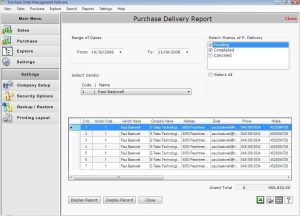Introduction to the Digital Transformation
The digital transformation of business processes is an undeniable force reshaping the operational landscapes of industries worldwide. Among the pivotal components of this digital shift, the integration of online purchase order systems stands out for its profound impact on enhancing efficiency, reducing errors, and streamlining procurement processes. Companies are increasingly moving away from traditional, manual handling of purchasing orders to embrace automated purchase order systems. This transition not only represents an adaptation to the digital age but also a significant optimisation of resources and operations.
The Evolution of Purchase Order Systems
In the early stages of business computing, purchase order systems were rudimentary, often limited to basic spreadsheet software or even paper-based logs. However, the evolution of PO software has been rapid and transformative. Today, sophisticated purchase order systems are not merely optional tools but essential components of a streamlined purchasing process. These systems offer unprecedented levels of transparency, control, and efficiency, enabling businesses to manage their procurement activities more effectively than ever before.
Understanding the Impact of Purchase Order Software
The deployment of a purchase order system within an organisation can have far-reaching effects on its operational efficiency. By automating the creation, approval, and management of purchase orders, companies can significantly reduce the likelihood of human error and improve the speed of their procurement cycles. Purchase order software also facilitates better inventory management, ensuring that stock levels are maintained optimally, reducing both understocking and overstocking scenarios. The benefits extend beyond mere efficiency; these systems also provide critical data insights that can inform strategic decision-making.
Key Features of Modern Purchase Order Systems
Modern purchasing order systems are distinguished by several key features that enhance their utility and effectiveness. These include automated approval workflows, real-time budget tracking, and seamless integration with other financial and inventory management systems. Additionally, contemporary purchase order software offers robust analytics and reporting capabilities, allowing businesses to monitor purchasing trends, evaluate supplier performance, and optimise their procurement strategies. Such features not only streamline operations but also contribute to greater strategic agility and resilience.
The Role of Purchase Order Systems in Enhancing Supplier Relationships
Effective supplier management is crucial for maintaining smooth operational workflows and ensuring the timely availability of goods and services. Purchase order systems play a pivotal role in this context by providing a clear, consistent, and efficient channel of communication with suppliers. By standardising purchase orders, reducing errors, and facilitating timely payments, these systems help in building trust and reliability with suppliers, leading to better terms and stronger relationships. This aspect of purchase order management system functionality underscores its value beyond mere transactional efficiency.
Choosing the Right Purchase Order Software
With a plethora of options available in the market, selecting the right purchase order software can be a daunting task. Businesses must consider several factors, including the size and complexity of their operations, integration capabilities with existing systems, ease of use, and cost. It is also important to look for software that offers scalability to accommodate future growth. The ideal purchase order system should align with the organisation’s specific needs and objectives, ensuring a seamless fit into its operational ecosystem.
Case Studies: Success Stories with Purchase Order Software
Many organisations across various sectors have experienced significant improvements in their procurement processes and overall operational efficiency through the adoption of purchase order systems. These success stories highlight the versatility and effectiveness of purchase order software in addressing the unique challenges faced by businesses. From reducing procurement costs and improving spend management to enhancing supplier collaboration and achieving greater operational transparency, the benefits realised are both diverse and substantial.
Future Trends in Purchase Order Management
The future of purchase order management is likely to be shaped by advancements in technology, including artificial intelligence (AI), machine learning, and blockchain. These innovations promise to bring about even greater efficiencies, accuracy, and security to the procurement process. As businesses continue to navigate the digital shift, staying abreast of these trends and incorporating the latest technologies into their purchase order systems will be crucial for maintaining competitive advantage and operational excellence.
Conclusion
The transformation of business operations through digital technologies is an ongoing journey, with online purchase order systems playing a crucial role in this paradigm shift. By embracing these systems, companies can achieve not only operational efficiency and cost savings but also strategic advantages in supplier management and business planning. As we move forward, the evolution of purchase order systems will continue to be a key driver of business innovation and success in the digital era.

